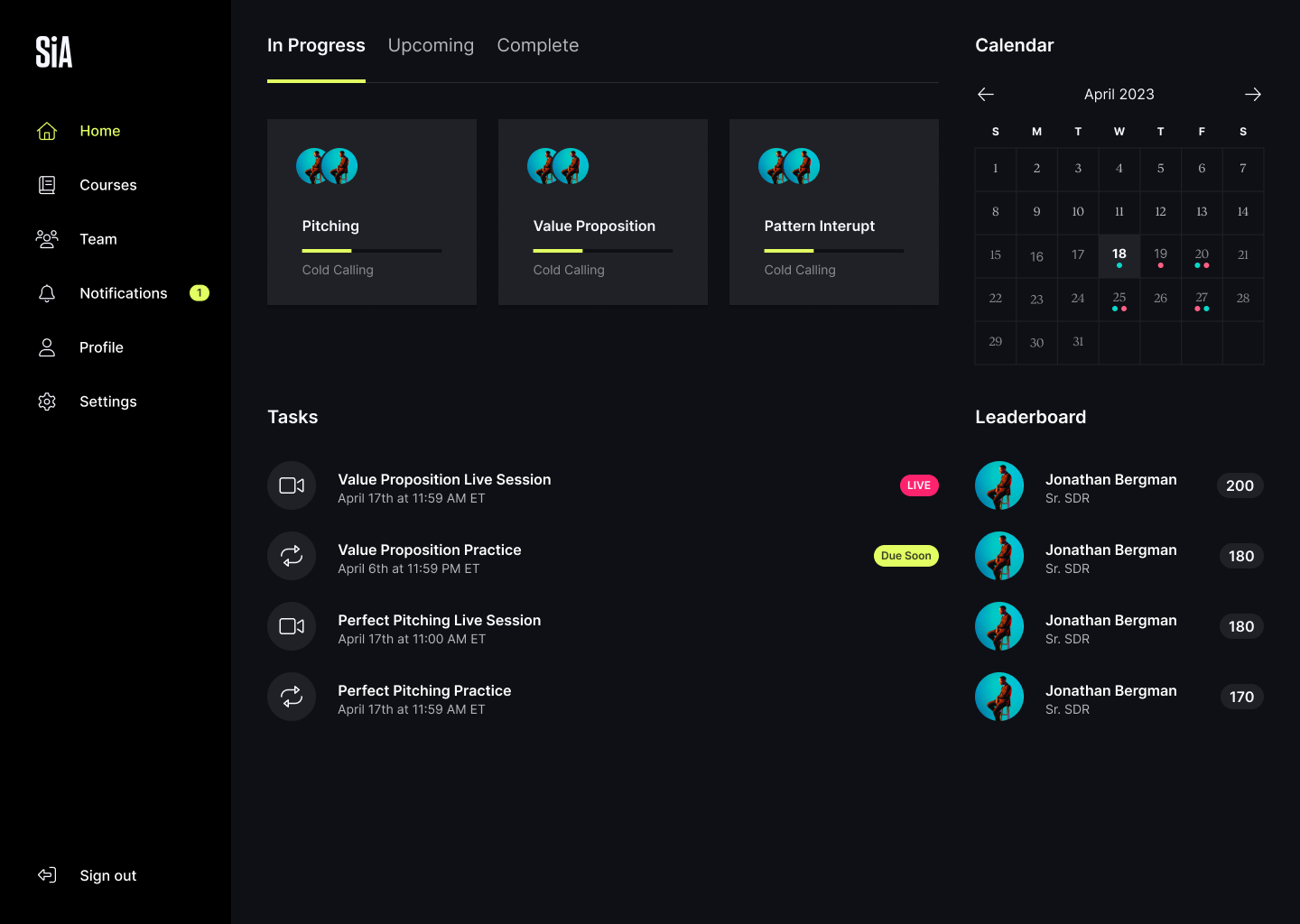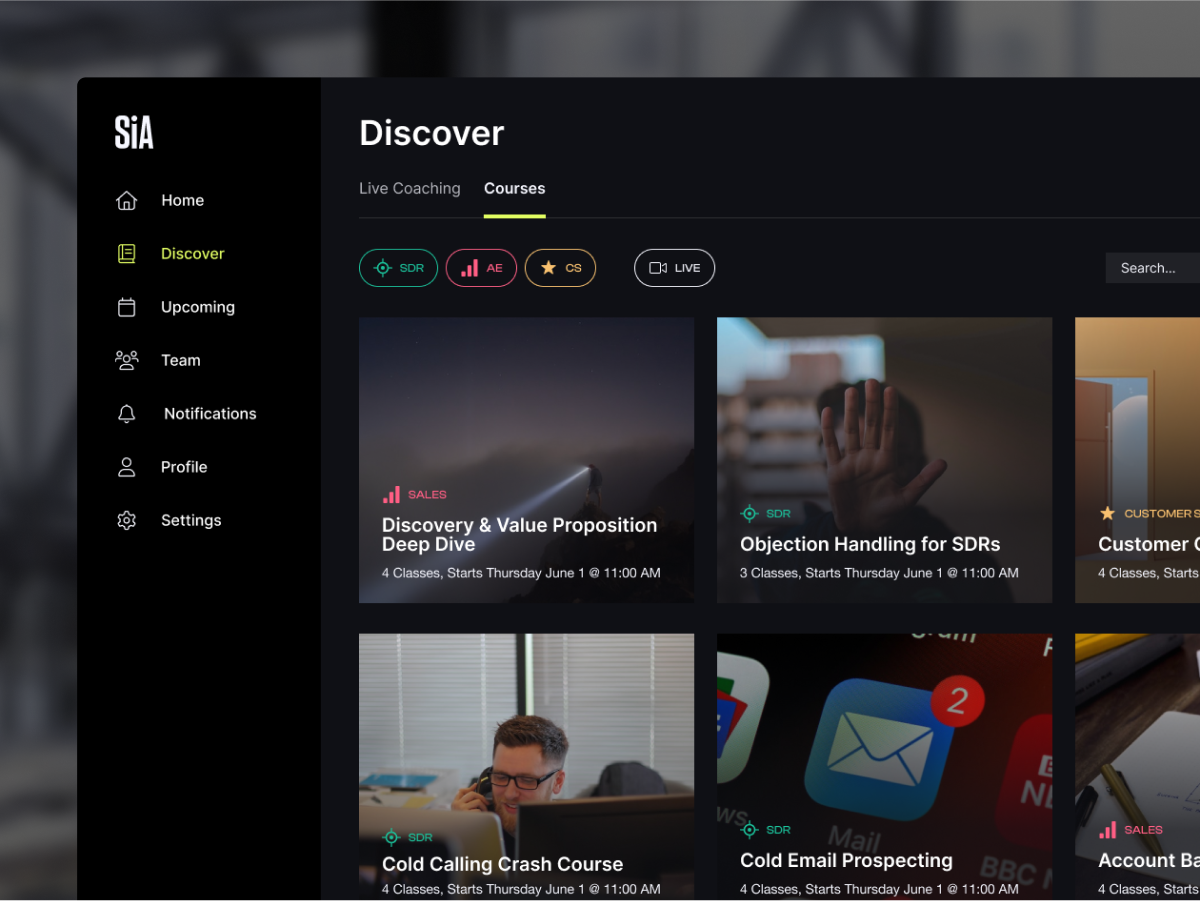Overview
As the Product Design Lead at Sales Impact Academy (SIA), I undertook the challenge of redesigning and enhancing the sales training platform to deliver an unparalleled learning experience for sales professionals. The project aimed to create a comprehensive and user-friendly platform with features such as course discovery, user tasks, live coaching, and asynchronous coach feedback. Leveraging Lean UX principles, I led a cross-functional team through a series of quick iterations to achieve exceptional results.
The Problem
The previous platform at SIA lacked a cohesive user experience and struggled to keep pace with the evolving needs of the target customer. Users faced difficulties in discovering relevant courses, lacked personalized learning paths, and had limited access to coaching and feedback. The platform’s outdated design and usability issues contributed to low user engagement and limited success. We saw high churn and sales drop dramatically after the bubble burst in 2022 and we quickly realized our product was a nice-to-have rather than a must have.

Solution
To address the challenges faced by SIA with their existing sales training catalog, we proposed a comprehensive redevelopment of our platform and learning experience that focuses on concise 30-minute sessions on specific skills. The new platform will incorporate personalized learning paths, interactive live coaching, and efficient synchronous and asynchronous coach feedback to drive engagement and attendance. However, this was not a straight path, it will be a long journey to get to this point. Let’s jump in.
Re-brand
Prior to the economic shift in 2022, SIA revamped its visual identity, infusing a fresh and contemporary aesthetic that resonated with the dynamic and fast-paced world of GTM. We worked closely with internal and external team members and stakeholders in a brand sprint to derive an identity that would resonate with our target market.
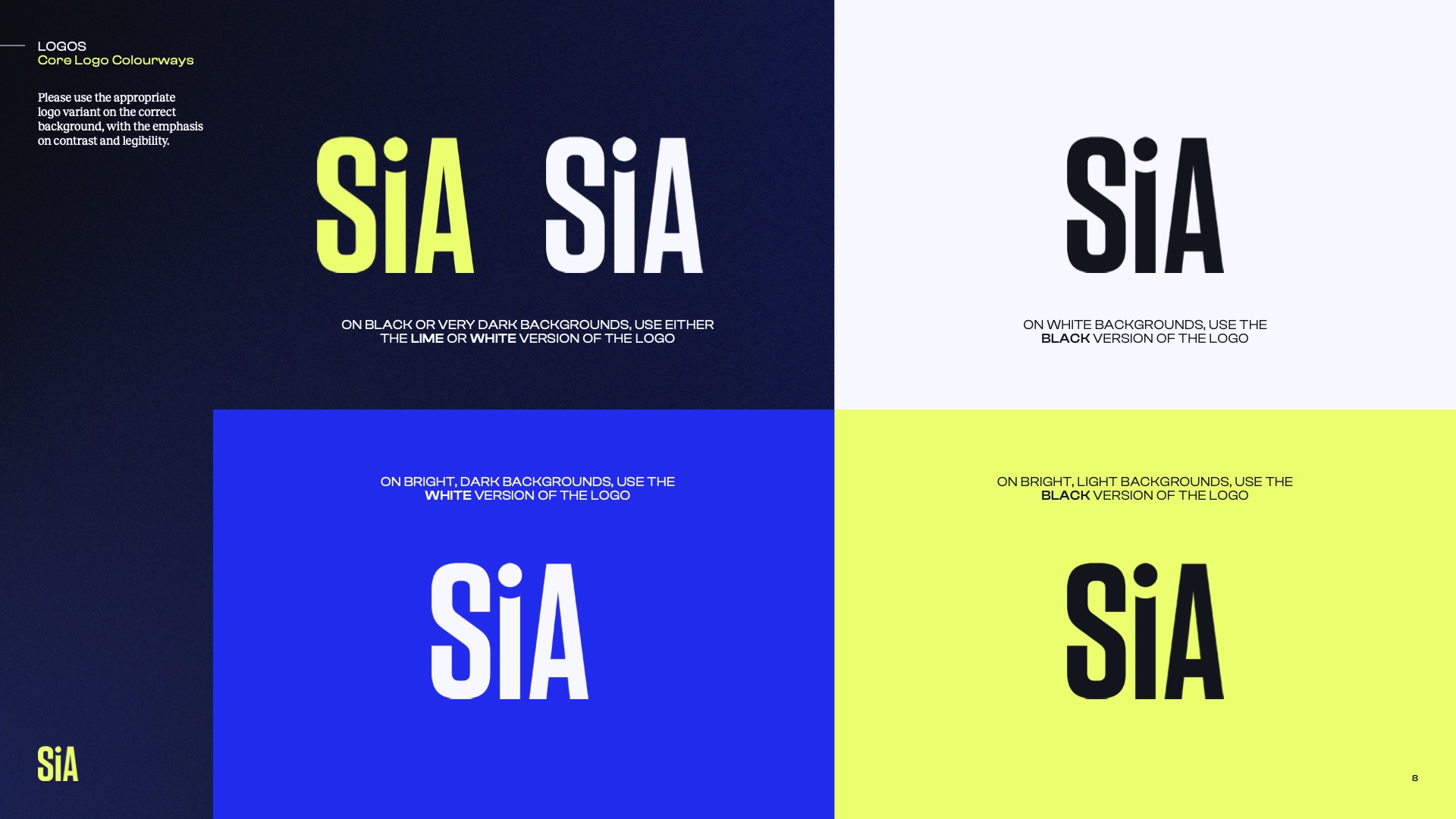
Design System
On the heels of the re-brand we created a design system to ensure a consistent user interface and experience across all platform features. This system enabled the design and development teams to work efficiently, promoting design scalability. We built the component library in Figma and leveraged the front-end framework ChakraUI to build a scrappy design system that enabled our engineers to move fast while adhering to the new visual identity.
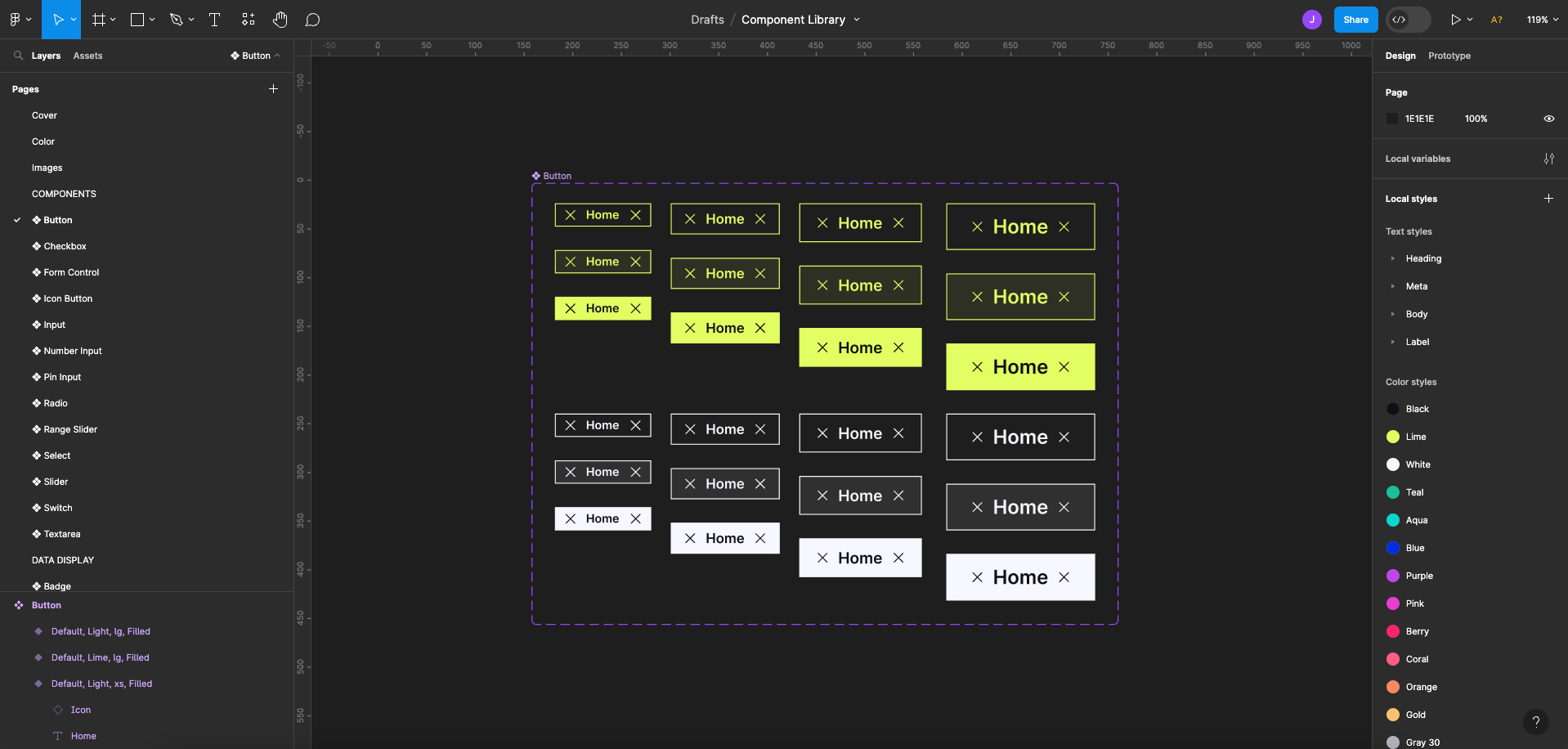
Ideation and testing
In order for us to build a product that was a need-to-have for our customers we hyper focused on research and testing. To gather data, we aggregated surveys, focus groups, NPS scores, and online reviews. We then facilitated multiple design thinking sessions such as design sprints to brainstorms potential solutions to for our customers.
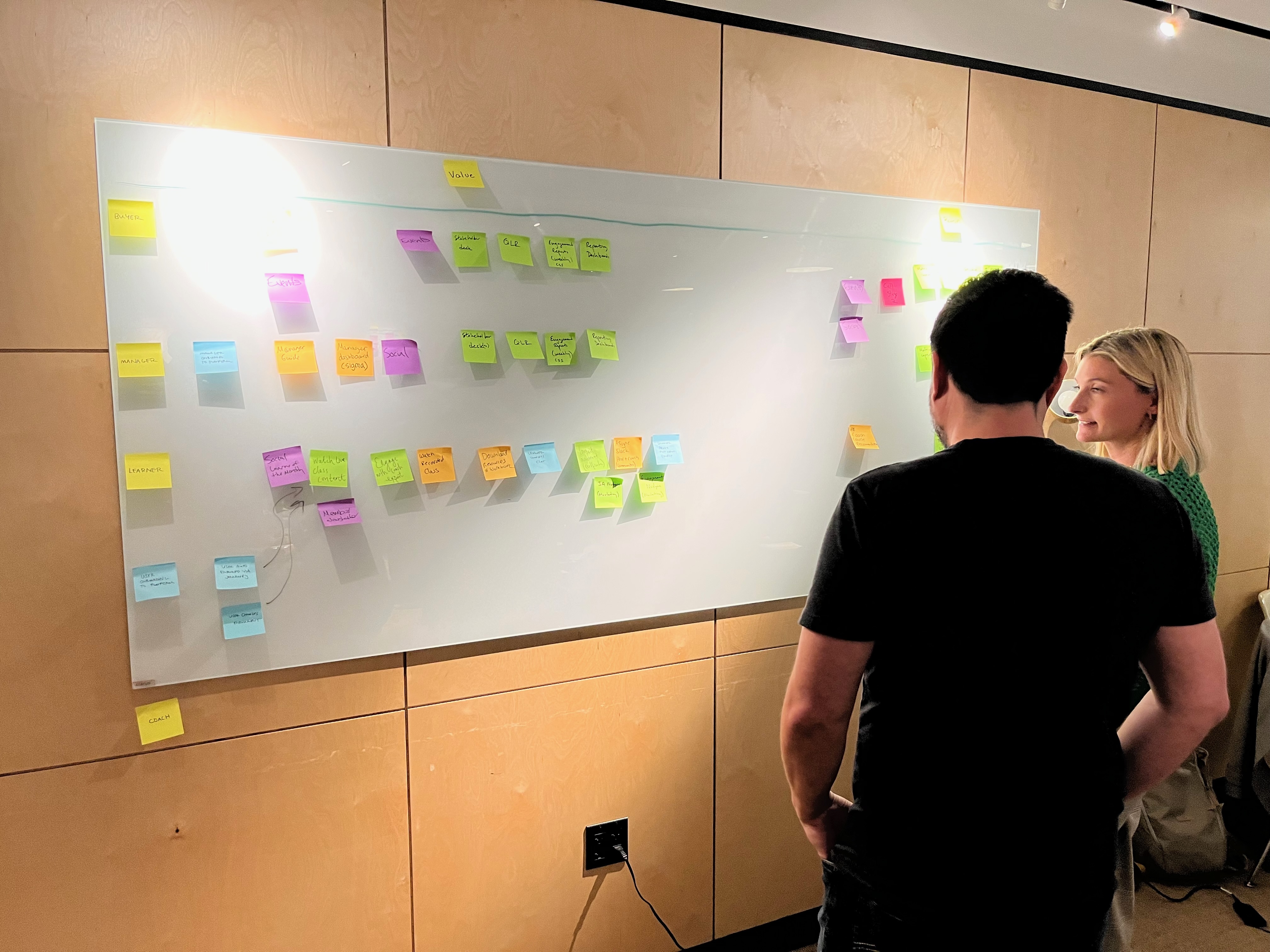
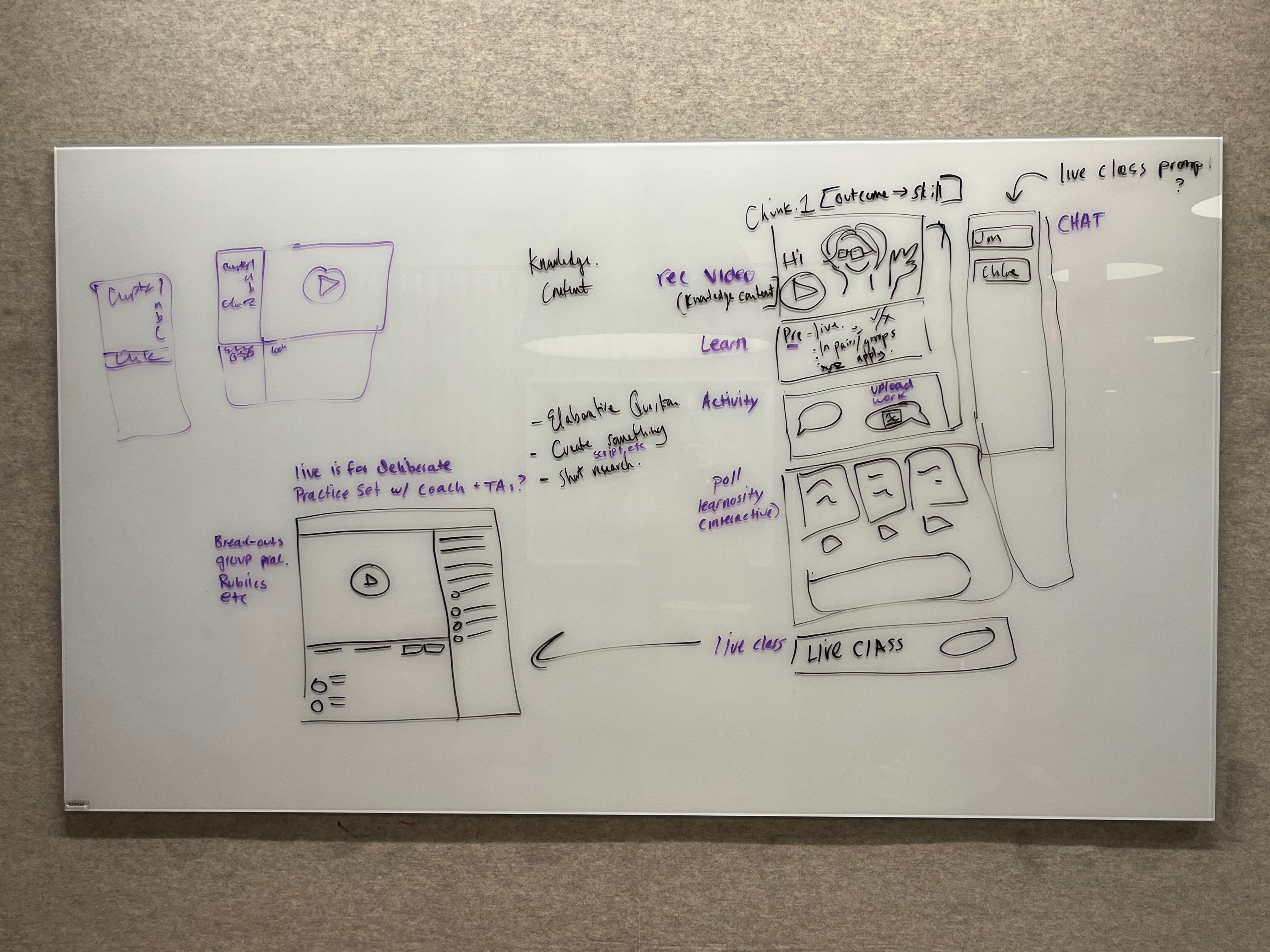
This helped me gain insights into the customer’s pain points, expectations, and desired features. I also analyzed user behavior data from the existing platform with Posthog to identify usage patterns and areas for improvement in the user experience. Once we had identified the pain points in our user journeys we launched tests for revamped learning experiments in Notion and prototyped new platform features.

Design
Once we had gathered enough evidence and built confidence in the product strategy we invested heavily into designing the platform user experience. The platform would be the medium by which customers could find, enroll, and learn new skills through focused practice and feedback.
Course Discovery
Based on user feedback and industry best practices, I implemented a robust course discovery system. Users could now easily filter and search for relevant courses based on their role, live sessions, and specific topics based on text.
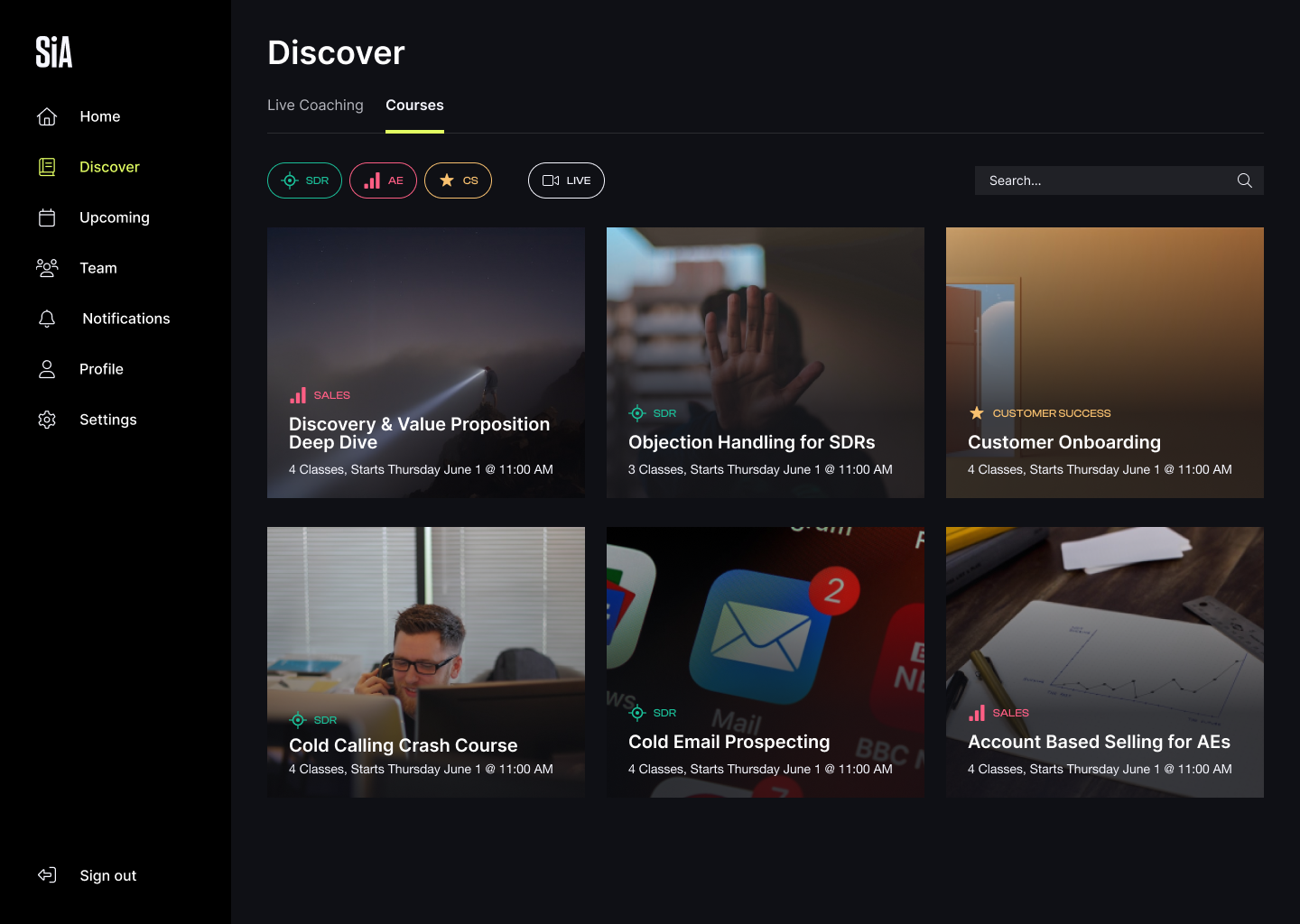
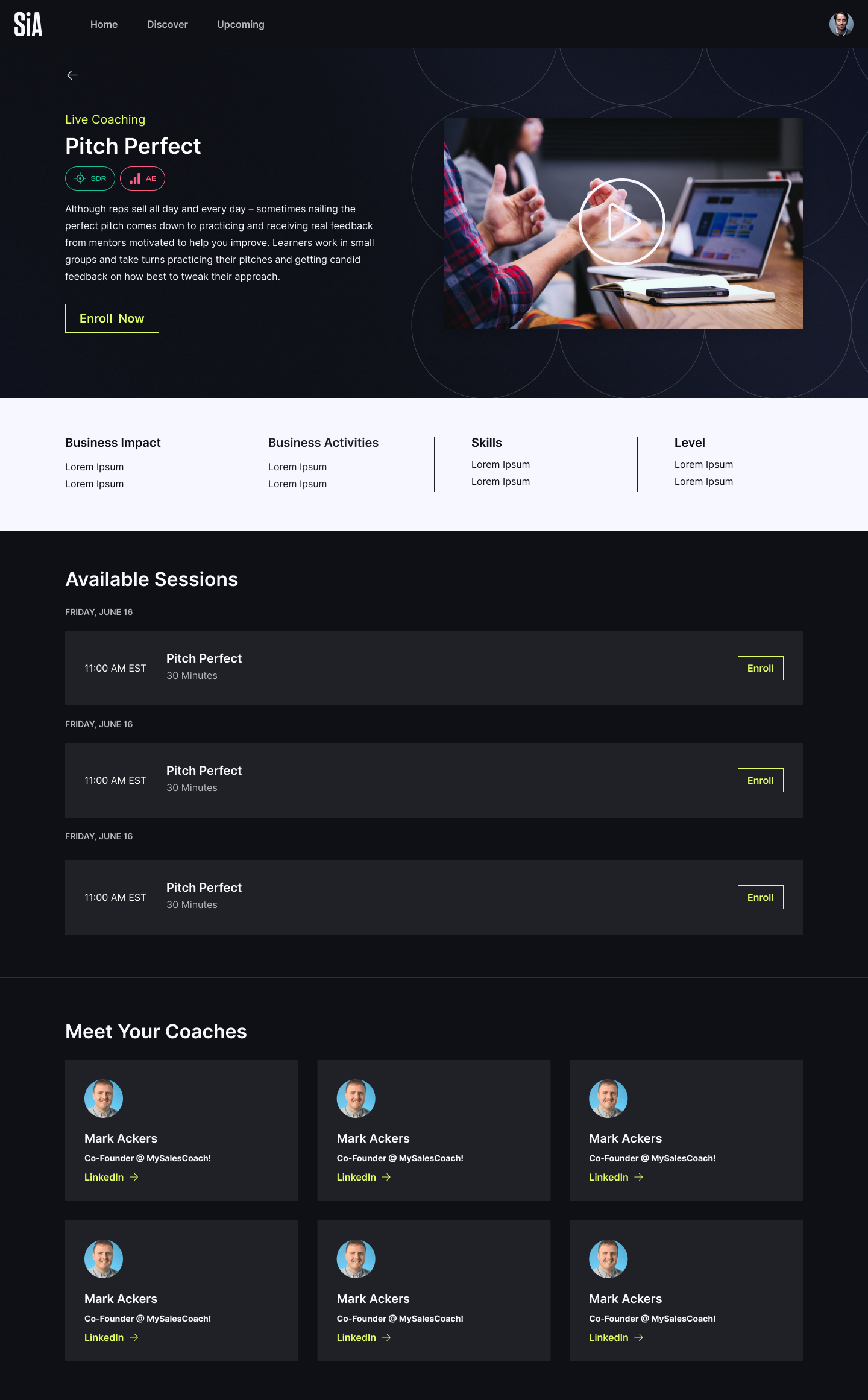
User Tasks
To enhance user engagement and progression, I introduced a personalized task management feature. The users home screen would list the next required tasks based on their course progress. This ensured the user knew what to do and when. When all tasks are complete the user recieved a joyful cheer!
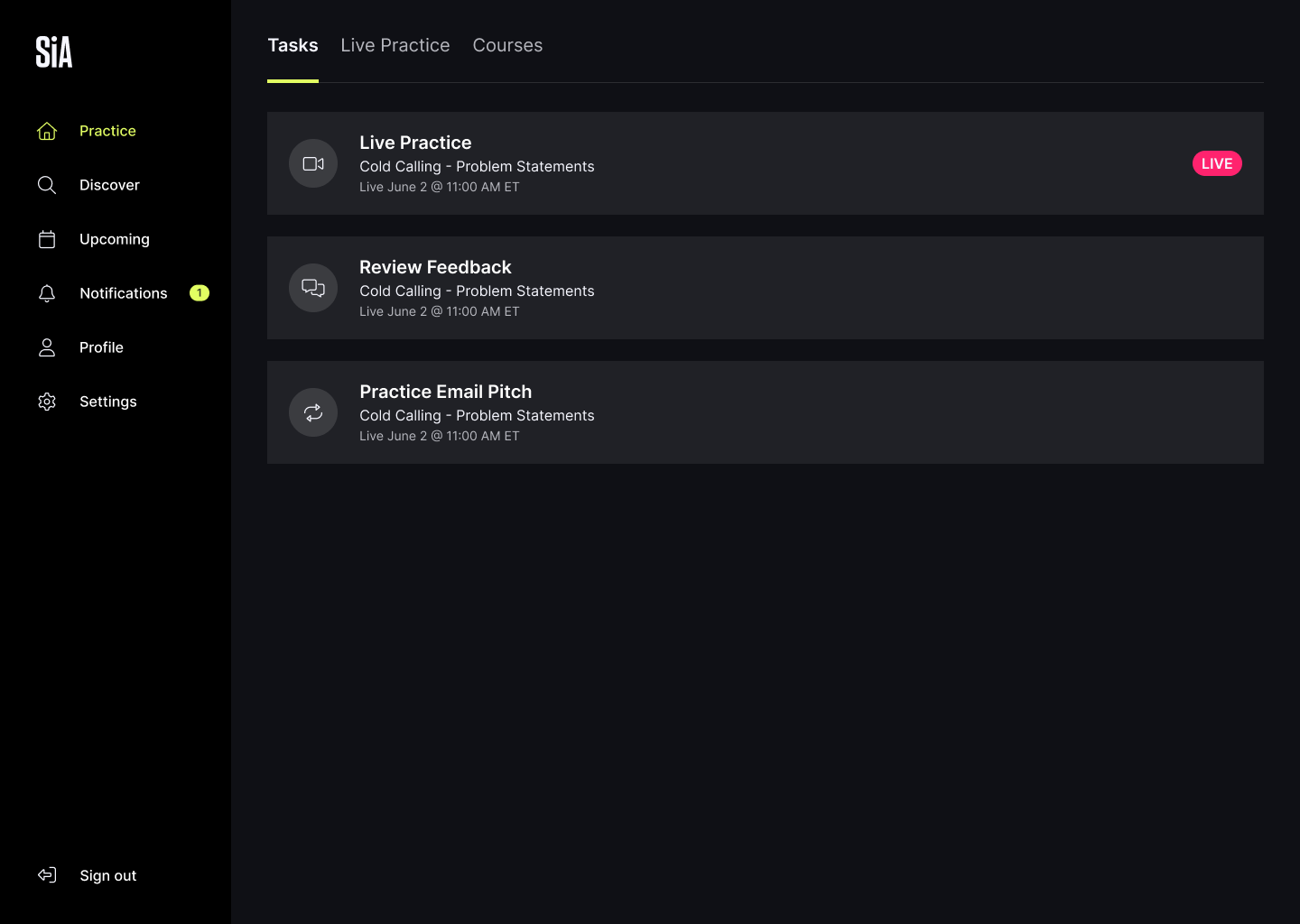
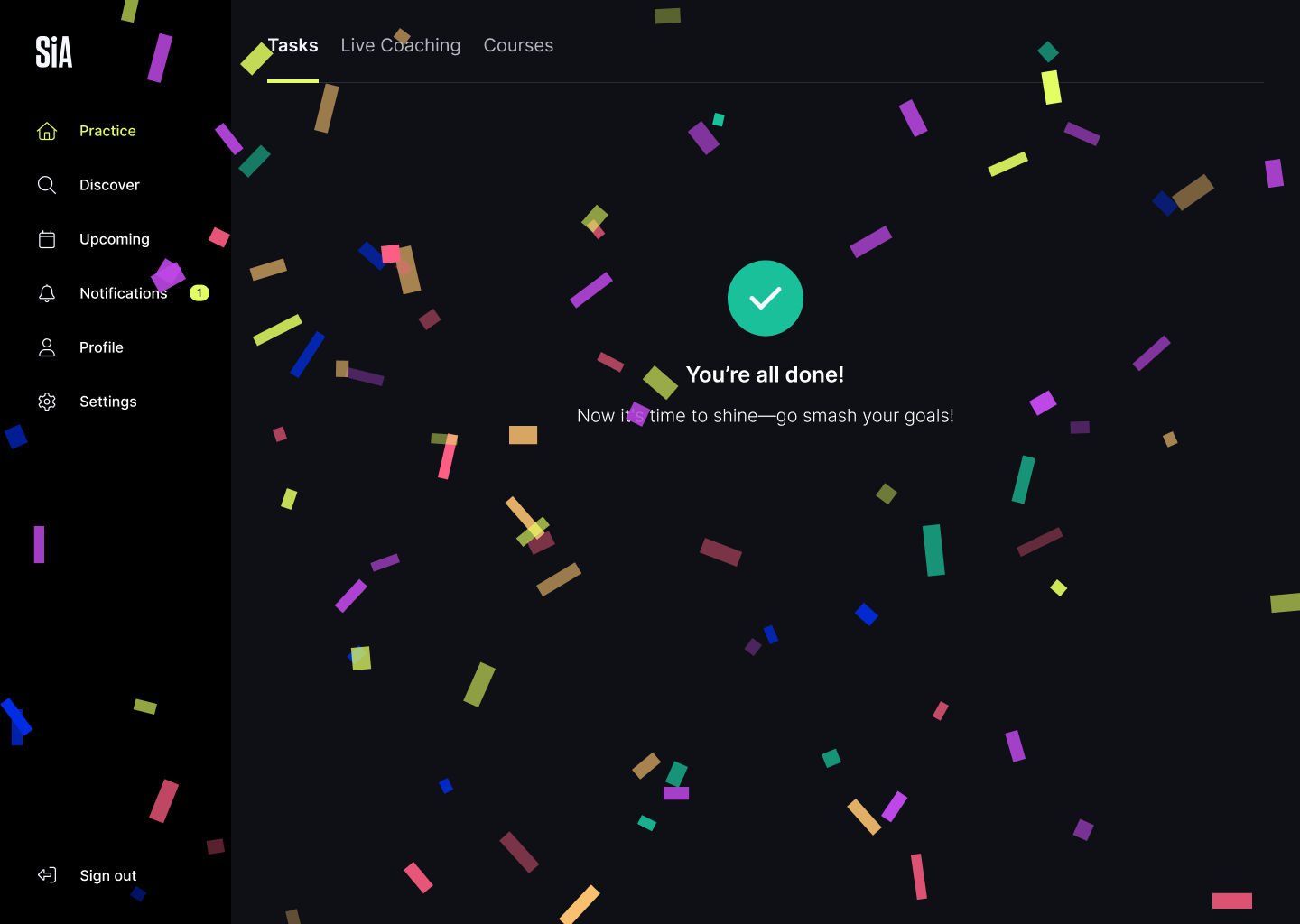
Live Coaching
To facilitate interactive learning, I integrated live coaching sessions into the platform. Sales professionals could now join virtual coaching sessions with industry experts, participating in role-playing scenarios and receiving real-time feedback.

Managers could also discover upcoming sessions from a dedicated page and enroll their team.
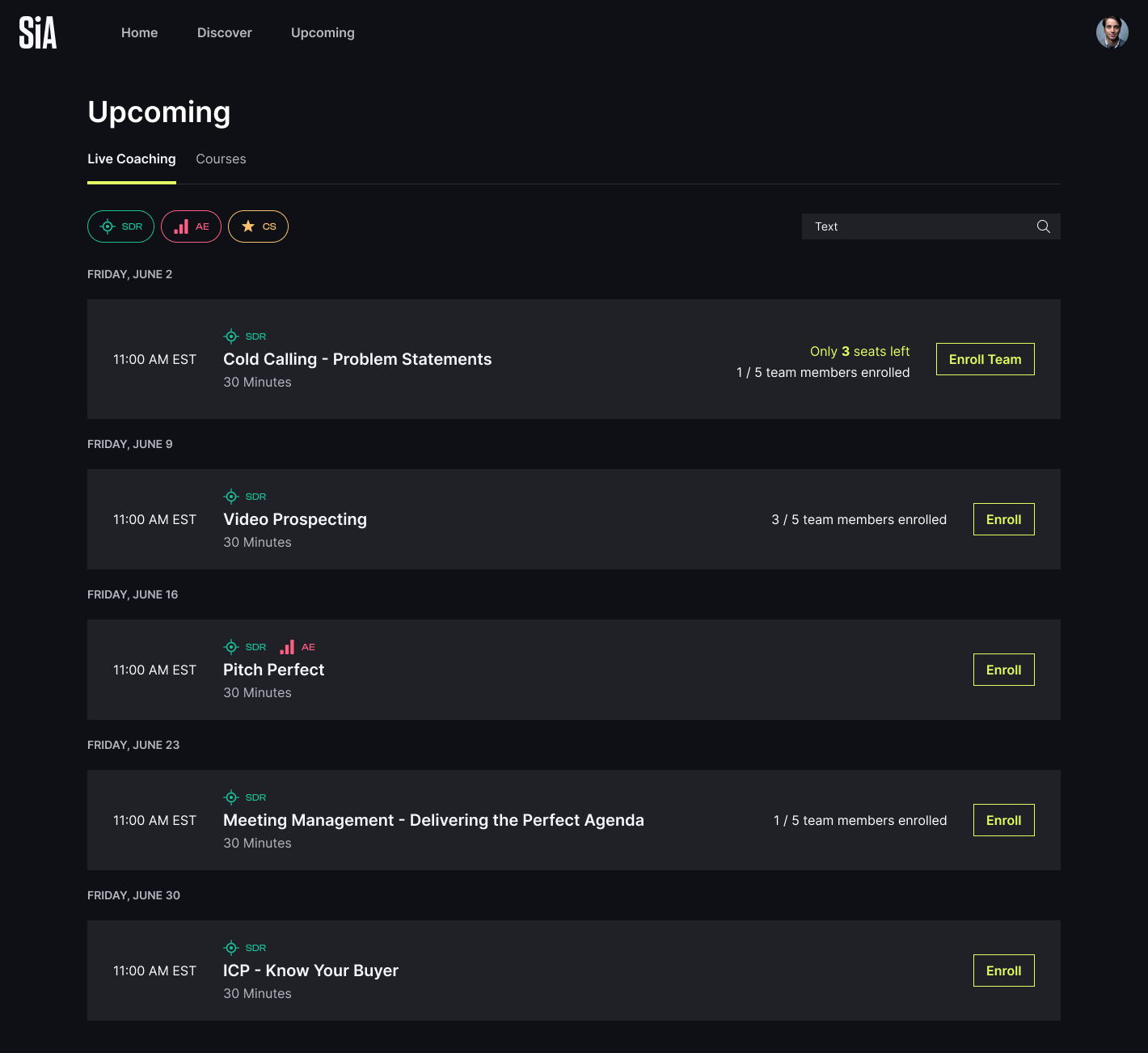
Async Coach Feedback
Recognizing the need for continuous improvement, I introduced asynchronous coach feedback. Users could submit recorded sales pitches or interactions for review and receive personalized feedback from their coaches.
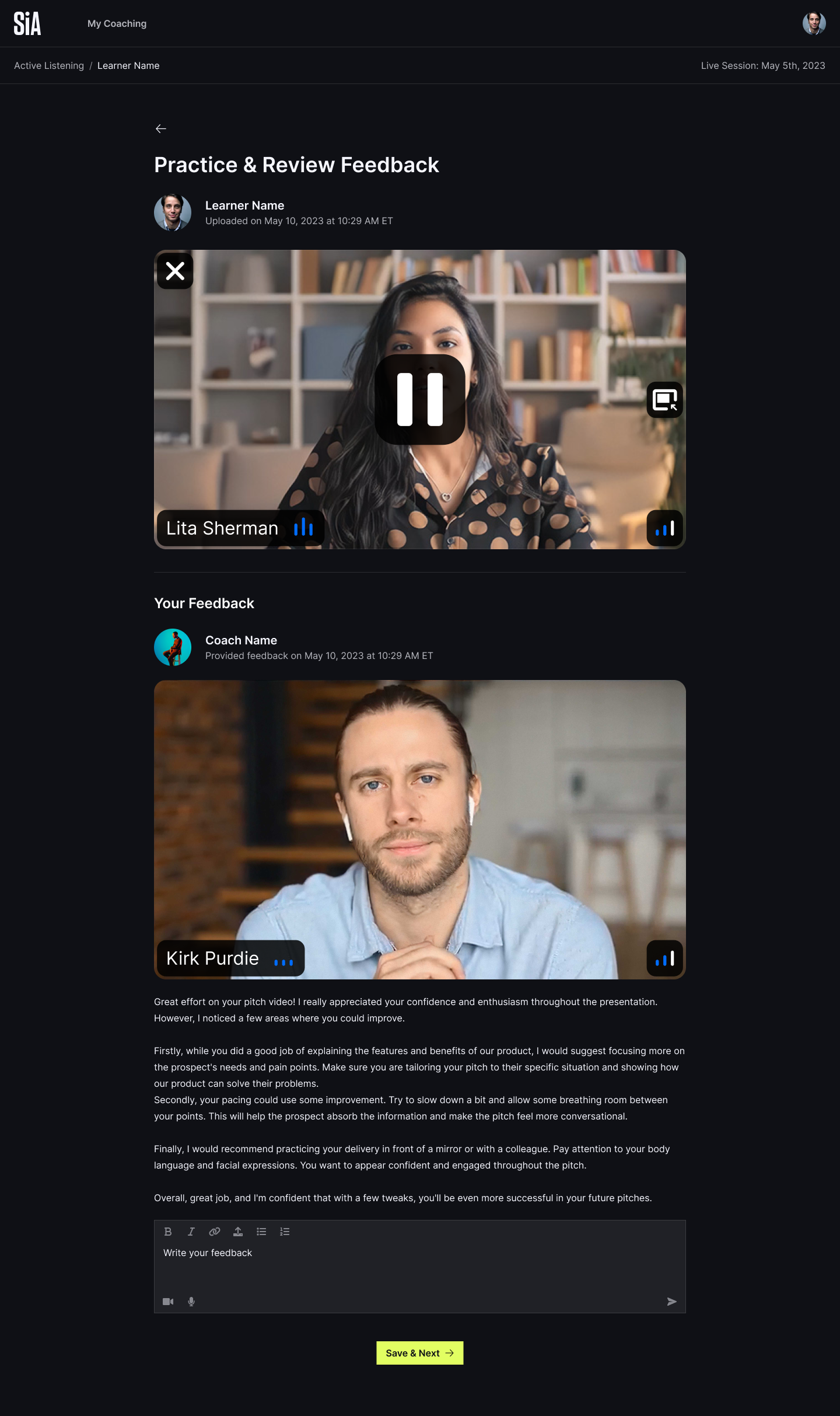
Results
The redesigned sales training platform achieved remarkable results and significantly impacted SIA’s ability to scale their new product offering. User satisfaction surveys indicated a 80% approval rating for the platform’s new product, design, and features, highlighting the positive impact on user experience. User experience NPS went from 29 to 68 average.
Conclusion
By adopting a user-centered design approach and applying Lean UX principles, the redesign of Sales Impact Academy’s sales training platform proved to be a game-changer. The seamless integration of course discovery, user tasks, live coaching, and asynchronous feedback resulted in improved user engagement and performance. The success of this project demonstrated the significance of continuous improvement and quick iterations in creating a product that truly meets the needs of its users. The possibilities of what’s next are endless…
